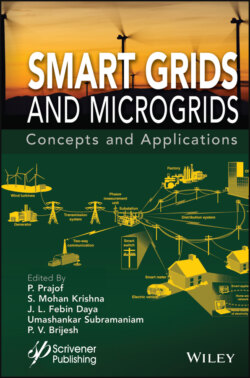Читать книгу Smart Grids and Micro-Grids - Umashankar Subramaniam - Страница 21
1.3.1 Gauss-Seidel Technique
ОглавлениеThe GS is an iterative technique for solving the non-linear transcendental equations. The generalized form of equation to be solved using GS can be represented as [15, 20]:
(1.30)
Where ‘x’ is the variable to be determined and ‘k’ denotes the number of iterations, xk+1 is the new value obtained and xk represents the old value. The algorithm converges if the absolute error of new and old values is less than the tolerance of 10-6. In this work, the GS method is employed to determine the unknown parameters by solving the equations of (1.10), (1.11), and (1.13) to get the values of Vt, Rse, and Rsh with the input values of Vmpp, Impp, Voc, Isc, and Ns, and initialization of Vt, Rse, and Rsh. Then, the obtained values of Vt, Rse, and Rsh are used to compute the unknown parameters of ILG and Isat. The detailed procedure on determination of five parameters of PV module is described in [15]. However, under dynamic environmental condition the GS method is failed to obtain the converged solution as the initial values cannot be chosen appropriately. Hence, a variant of GS method called Successive Under Relaxation was used to solve (1.28) and (1.29) to obtain the voltage and current at MPP under varying environmental condition as given in [15]. However, the appropriate choice of selection of relaxation factor should be made for faster convergence of solution else may result in slow convergence as SUR exhibits linear convergence characteristics [21].
